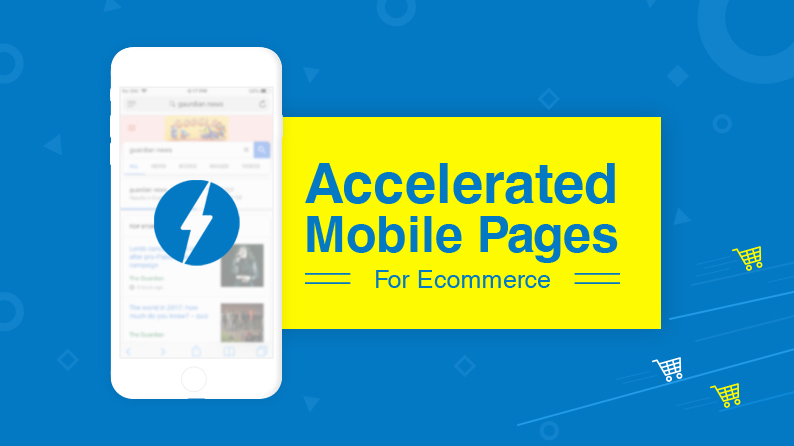Do you remember browsing website during early 2000s? Most of the websites that time, was static in nature and plain boring. But in the last decade and a half, website design has changed a lot. The coming of HTML5 and CSS3 has surely given a new perspective to websites. In addition to it, mobile computing has taken off in a big way and bulk of the information these days is accessed on a mobile device.
As consumers are accessing more and more information, the need for getting the information faster has also risen. Nobody wants to wait more than a couple of seconds to access the information. Studies have shown that if a web page takes more than 2-3 seconds to load then the user has already lost interest in the information. On a mobile device that waiting time slims down to 1.5 seconds. That is a very small window.
The fact of the matter is that every bounce rate is a big problem for website administrators and this issue is more prominent in ecommerce sector. We know that 53% of website visits are abandoned if a mobile site takes over 3 seconds to load, and that 77% of mobile sites take over 10 seconds to load on a 3G network. It’s no wonder mobile conversions are still a fraction of desktop, even though mobile traffic has taken the traffic lead. Luckily..
There’s an AMP for that
In order to achieve a low page loading time, Google launched a mobile centric program called AMP (Accelerated Mobile Pages). The main aim of this program was to ensure that consumers get a watered down version of a page that loads instantaneously. In the last couple of years, this technology has been massive hit among online users as bulk of the major websites have implemented it on their website. Web analysis have also shown that it has not only helped in increasing the user experience of the internet user, but also have a positive impact on conversion rate of the website.
Want to decrease page loading speed of your ecommerce pages
Growing dominance of AMP in ecommerce sector
Although it was initially adopted just by publishers, and became a huge hit, it has slowly gotten traction in the ecommerce sector as well.
AMP usually works on a principle where a lightweight web page is copied to Google’s AMP cache and the page loads in milliseconds. Yes you heard it right.
Going from 10+ seconds to millisecond is a huge boost for any website, especially ecommerce.
Big marketplaces like Ebay and Ali Express have already adopted AMP in a big way and the results have been hugely positive.
AMP is identified in mobile Google search results by a small lightning bolt logo. As users get familiar with the logo, they will be more inclined to click, knowing they are guaranteed a consistently fast experience.
This ensures that the consumers will prefer your ecommerce website over the competition, which is highly crucial in ecommerce.
How AMP affects conversions and SEO of an ecommerce website
As already discussed, faster time to interact is crucial when it comes to win online market share. If a consumer is spending less time on their purchase cycle, then it will surely benefit in the form of more conversions.
Although AMP does not directly help in improving SEO of ecommerce website, but it makes your website link more clickable. In addition to it, speculation are rife that in the future, AMP will be one of the key factors for ranking.
How purchase happens on an AMP
Making a transaction on a cached page will always score a negative point in the consumer’s mind. This is why when it comes to actual transaction, there is a transition from AMP-only to HTML. This transition is quick and consistent with the earlier experience, making the overall process seem natural. The bottom line is that consumers do not feel that they are being taken from one website to another.
In addition to this, progressive web apps also offer a seamless experience when it comes to accelerated mobile pages. Just take a look at an example below. The ecommerce website in question uses a seamless experience between AMP and PWA.
Common FAQs associated with AMP
Does AMP have an impact on SEO
Although there is no direct impact on on-page SEO for ecommerce, the speed improvements that come along with AMP ensure that the pages are promoted in Google’s organic rankings.
Will tracking become difficult when it comes to AMP pages
Currently Google analytics does not deal with cross domain analytics directly, which is required to track AMP traffic. The easiest solution is to implement amp-analytics feature.
How will dynamic features like search, filters and sorting work on amp pages
As AMP uses a semi cached page for faster loading, sometimes it becomes difficult to trigger certain behaviors like dynamic search functionality, filtering and sorting. However with the combination of amp-lightbox, amp-form, amp-sidebar, one can easily implement these features into the page. All these tools are available freely under amp project.
Will AMP have any effect on image heavy webpage
There is a belief that amp works on the same ground of Google cache, where the page only loads textual information, making image-heavy ecommerce page redundant. However, the reality is that AMP does not hamper the integrity of the webpage. In addition to it, there is also the option of amp-carousel, which offers detailed image functionality on the amp page itself.
How will upselling and cross selling work for recommendation on AMP
Cross-selling and upselling are the key components of ecommerce when it comes to increasing average order value of the cart. Provided that these suggested items are available in the html format they can easily be presented on the amp document using amp-carousel. In addition to it, one can also use AMP-to-PWA pathway for better integration.
Conclusion
As mobile commerce is gaining ground, it is calling for faster page loads and instantaneous access to information. AMP offers that options, which till now was limited to publishers. But as the project is growing, it is bringing additional functionality, which can be leveraged by ecommerce marketplaces. Although there are certain shortcomings, the overall benefits are too good to ignore for ecommerce vendors.



